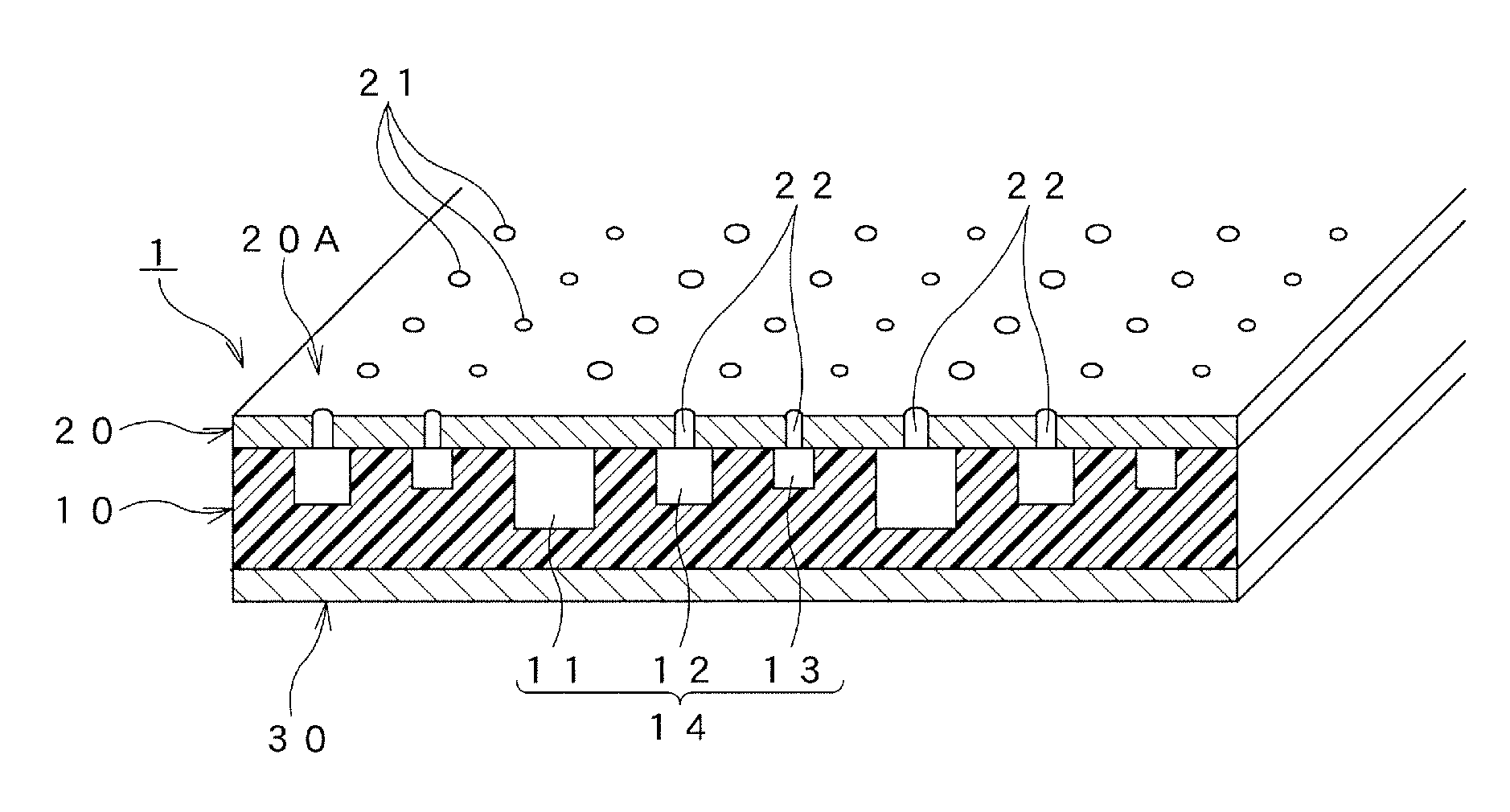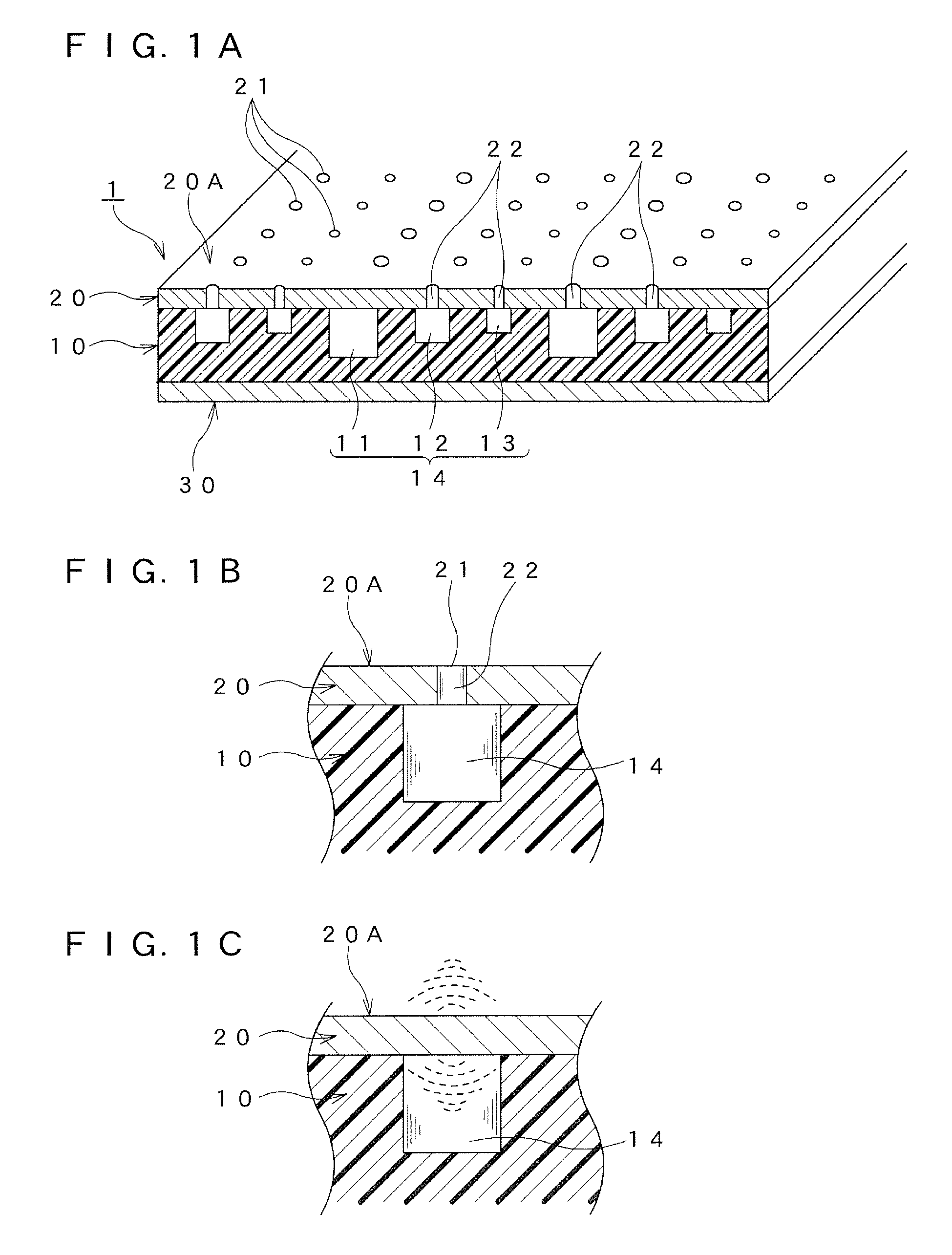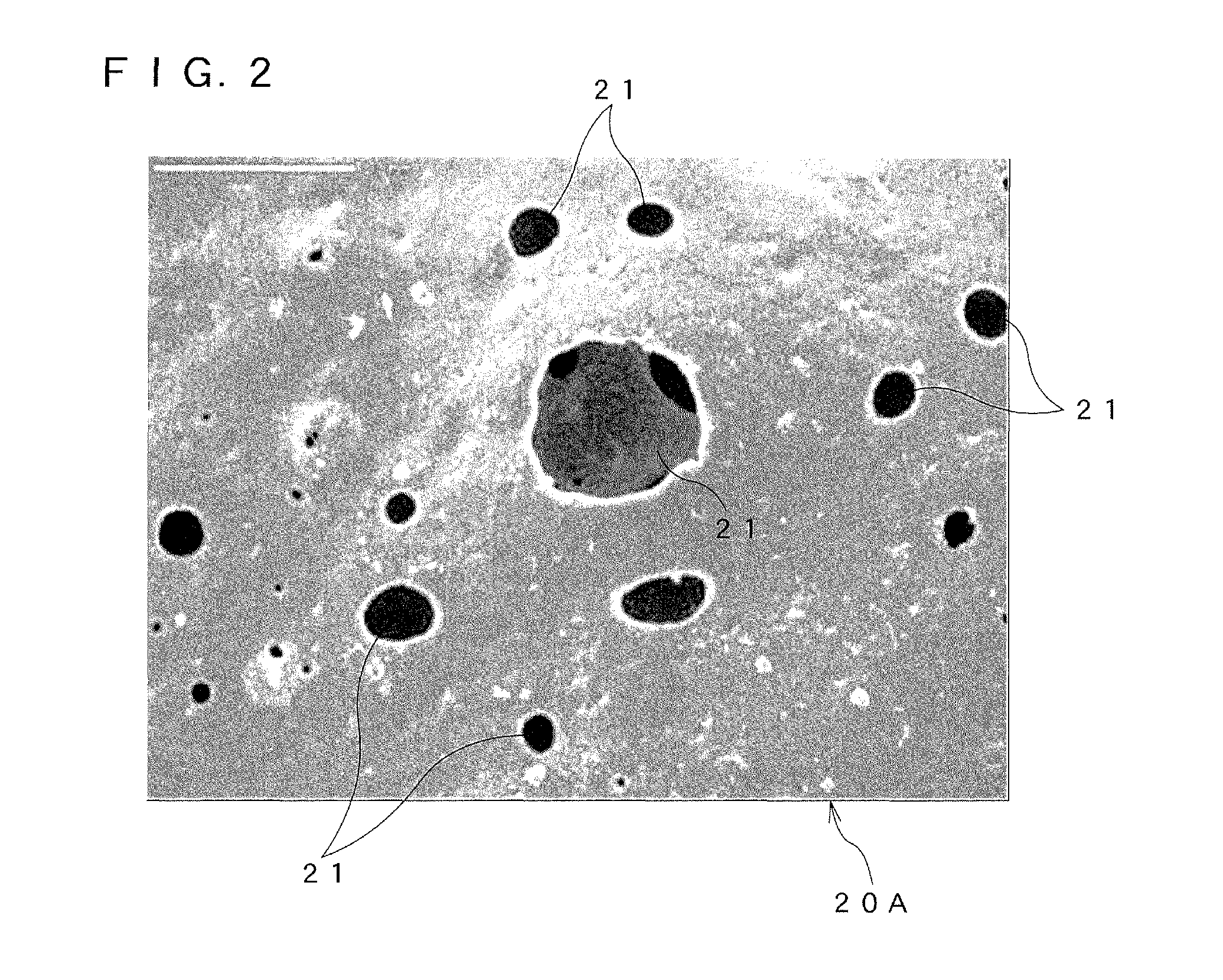Structure having sound absorption characteristic
a technology of sound absorption and characteristic, applied in the field of structures, can solve the problems of releasing the engine noise of the internal combustion engine, the noise of the muffler, and the structure is generally subject to vibration, so as to reduce the flow resistance of the air flowing through the sound pore, attenuate the sound propagation, and increase the flow resistance of the air
- Summary
- Abstract
- Description
- Claims
- Application Information
AI Technical Summary
Benefits of technology
Problems solved by technology
Method used
Image
Examples
first embodiment
[First Embodiment]
[0071]Next, a structure 1 having a sound absorption characteristic in a first embodiment of the present invention is described using FIGS. 2 and 3.
[0072]The structure 1 having the sound absorption characteristic in the first embodiment of the present invention contains a synthetic resin as a main component and is obtained by heating and foaming a composition mixing it with a foaming agent. This is a foamable synthetic resin composition. To describe in more detail, a foaming agent is blended in a one-pack urethane resin as a synthetic resin, which uses an isocyanate for a blocked urethane resin and, if necessary, an additive such as a surfactant or a filler such as calcium carbonate is added and mixed, thereby making the composition. Accordingly, the formable synthetic resin composition is a liquid material. The prepared composition is applied to a portion (object to be coated) desired to reduce noise, for example, a fender liner constituting a wheel housing of an a...
second embodiment
[Second Embodiment]
[0084]A porous layer 10 of the present embodiment is provided as follows. An aqueous dispersion of polytetrafluoroethylene (that is hereafter simply referred to as “PTFE”) made by agitating a surfactant and the water is prepared. The aqueous dispersion is coated on a base 30, which is a fender liner constituting a wheel housing of a vehicle, by known coating means such as spraying using a coating device such as a coating robot. A heat treatment is performed at a temperature of about 250 degrees centigrade to 350 degrees centigrade in order to evaporate and remove moisture and the surfactant in the coated aqueous dispersion. The base 30 that is the fender line is subjected to the heat treatment at a temperature of about 250 degrees centigrade to 350 degrees centigrade, since it is made of an iron. However, in case it is made of a resin, it is necessary to set it depending on a heating temperature and a treatment speed.
[0085]In addition, PTFE has a high melting poin...
third embodiment
[Third Embodiment]
[0091]Moreover, a crosslinkable resin can be formed in the same manner, too.
[0092]The present third embodiment forms a porous layer 10 and a surface layer 20 from a single material as in the above-described first and second embodiments.
[0093]The crosslinkable resin is a liquid resin having a viscosity characteristic that can especially trap a gas at the time of heating to form a communication structure. Any one may be used as long as it contains a urethane resin, an epoxy resin, an acrylic resin, or a liquid rubber as a main agent. For example, in isocyanates of a blocked urethane resin, TDI (tolylene diisocyanate) or MDI (methylene diphenyl diisocyanate) is preferable in order to form an internal cell having a high effect to absorb sound. TDI is more preferable.
[0094]In addition, a molecular weight of the blocked urethane resin preferably has a weight average molecular weight Mw of 1000 to 30000, more preferably 10000 to 20000 in order to effectively trap the foam...
PUM
 Login to View More
Login to View More Abstract
Description
Claims
Application Information
 Login to View More
Login to View More - R&D
- Intellectual Property
- Life Sciences
- Materials
- Tech Scout
- Unparalleled Data Quality
- Higher Quality Content
- 60% Fewer Hallucinations
Browse by: Latest US Patents, China's latest patents, Technical Efficacy Thesaurus, Application Domain, Technology Topic, Popular Technical Reports.
© 2025 PatSnap. All rights reserved.Legal|Privacy policy|Modern Slavery Act Transparency Statement|Sitemap|About US| Contact US: help@patsnap.com



